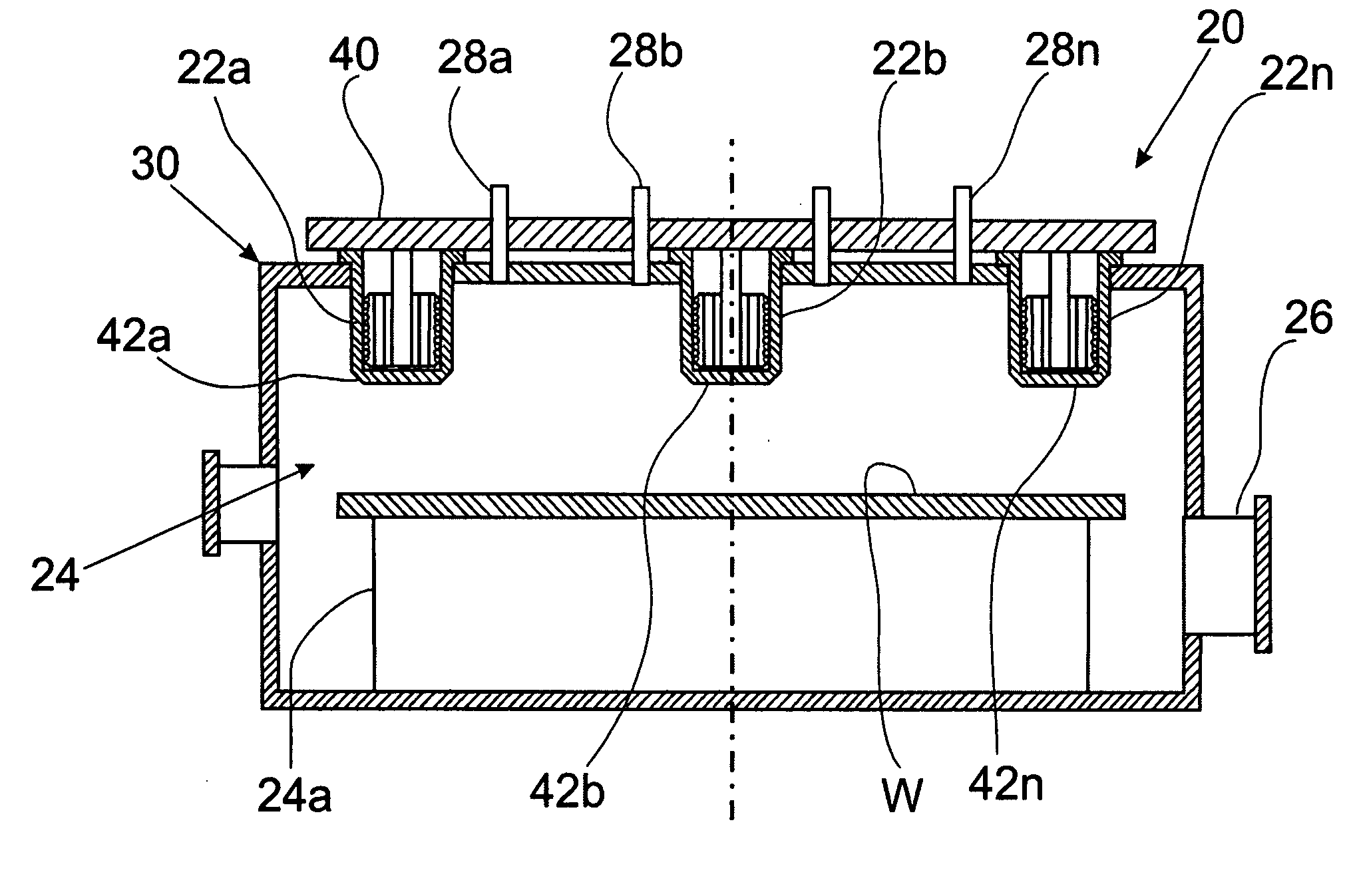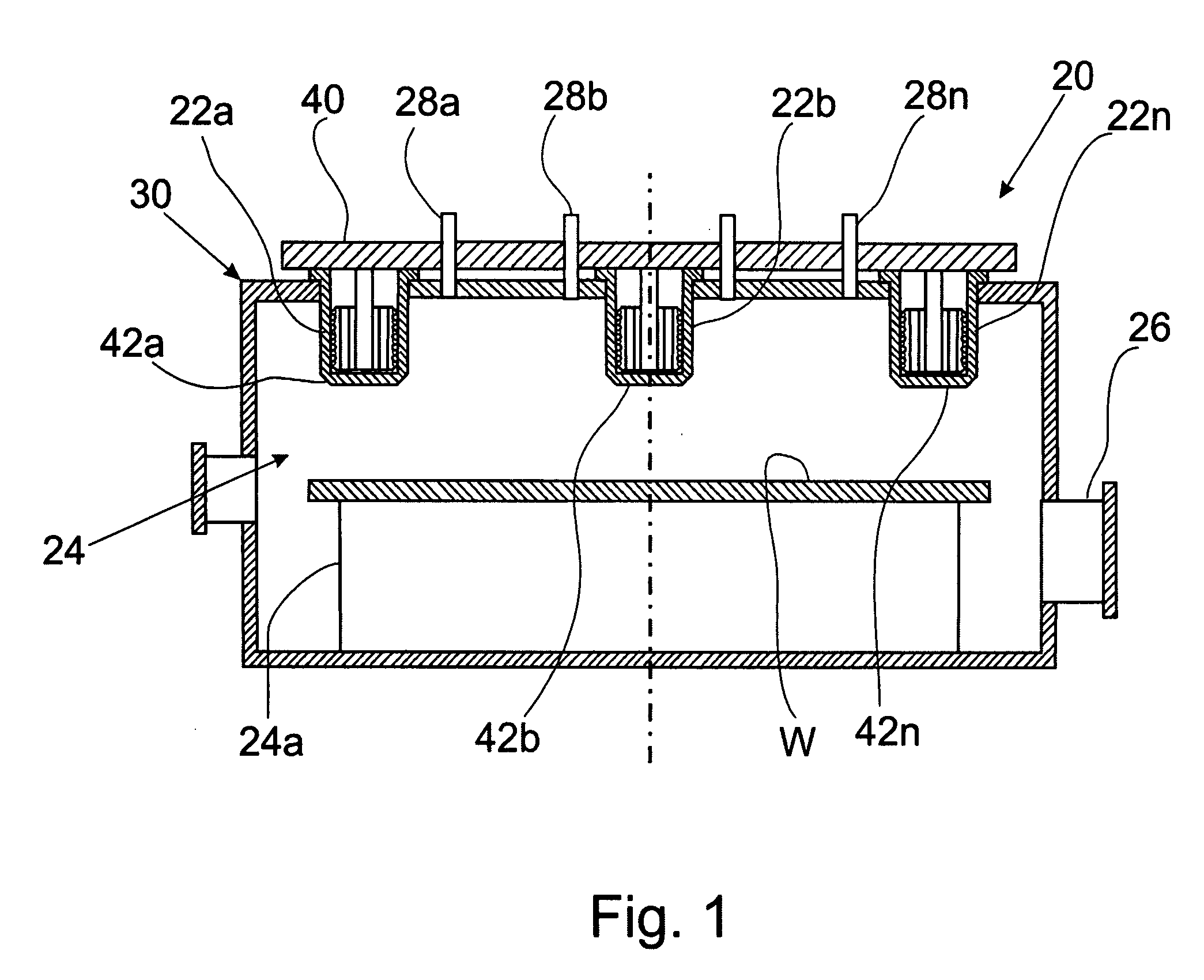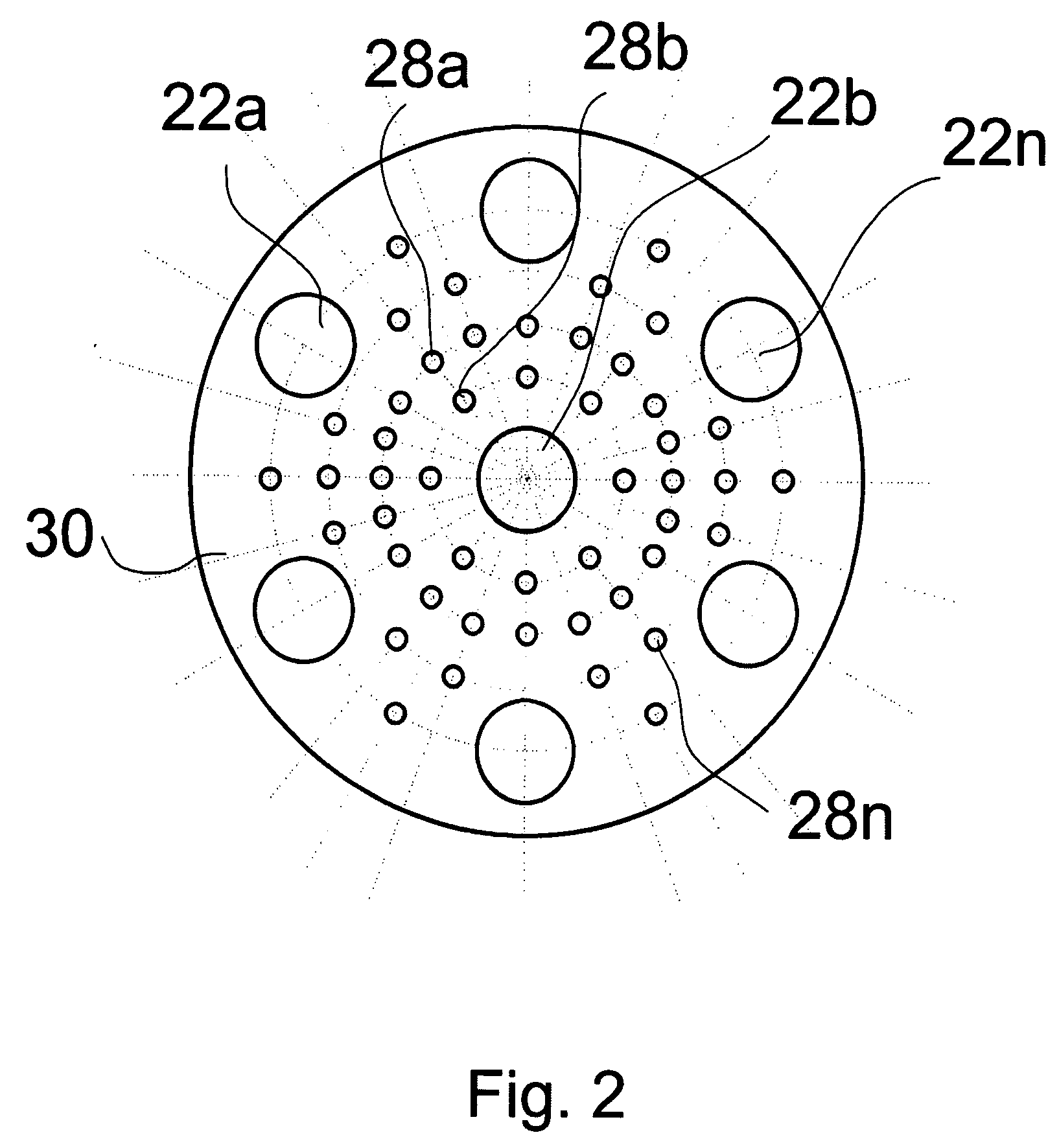Plasma reactor with inductie excitation of plasma and efficient removal of heat from the excitation coil
- Summary
- Abstract
- Description
- Claims
- Application Information
AI Technical Summary
Benefits of technology
Problems solved by technology
Method used
Image
Examples
Embodiment Construction
[0028] The foregoing has outlined, in general, the physical aspects of the invention and is to serve as an aid to better understanding the more complete detailed description which is to follow. In reference to such, there is to be a clear understanding that the present invention is not limited to the method or detail of construction, fabrication, material, or application of use described and illustrated herein. Any other variation of fabrication, use, or application should be considered apparent as an alternative embodiment of the present invention.
[0029]FIG. 1 is a vertical sectional view of a multiple-cell RF plasma reactor 20 with an array of ferromagnetic RF-antenna cells 22a, 22b, . . . 22n completely immersed into the plasma volume generated in the working chamber 24 of the reactor 20. FIG. 2 is a bottom view of the reactor cover that shows arrangement of individual RF-antenna cells. Reference numeral 26 shows an outlet port 26 connection to a vacuum system (not shown) for ev...
PUM
 Login to View More
Login to View More Abstract
Description
Claims
Application Information
 Login to View More
Login to View More - R&D
- Intellectual Property
- Life Sciences
- Materials
- Tech Scout
- Unparalleled Data Quality
- Higher Quality Content
- 60% Fewer Hallucinations
Browse by: Latest US Patents, China's latest patents, Technical Efficacy Thesaurus, Application Domain, Technology Topic, Popular Technical Reports.
© 2025 PatSnap. All rights reserved.Legal|Privacy policy|Modern Slavery Act Transparency Statement|Sitemap|About US| Contact US: help@patsnap.com



